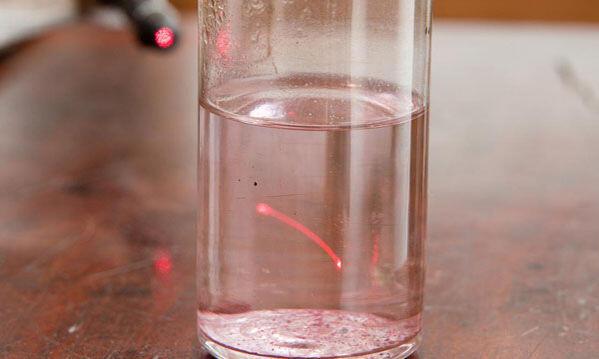
These liquids are some of the first examples of metallic gold colloids, made by Michael Faraday over 150 years ago.
Date: 1856
Place made: Basement laboratory at the Ri
Materials: Glass, gold, solutions
Measurements: Varied

These liquids are the first examples of metallic gold colloids. They were made, accidentally, by Michael Faraday whilst he was mounting thin sheets of gold leaf onto microscope slides.
Faraday spent a significant amount of time in the mid-1850s investigating the properties of light and matter. He made several hundred gold slides and examined them by shining light through them. To make the gold leaf thin enough to be transparent, however, Faraday had to use chemical means rather than mechanical (commercial gold leaf was made by hammering the metal into very thin sheets but this was too thick for his purposes).
Part of this process involved washing the films of gold, which Faraday noticed produced a faint ruby coloured fluid. He kept samples of the fluid in bottles and used them for similar experiments: shining a beam of light through the liquid. In his notebook Faraday observes: 'The cone was well defined in the fluid by the illuminated particles'.
He realised that this cone effect was made because the fluid contained suspended gold particles that were too small to see with the scientific apparatus of the time but which scattered the light to the side. This is known as the Faraday-Tyndall effect, and it is because of this discovery that Faraday is seen as one of the first researchers into nanoscience and nanotechnology.
Interestingly, these colloids are still optically active: we can do exactly the same experiment as Faraday by shining a modern laser pointer through the bottle and producing a cone of light (see the photo below). Nobody knows why this is as we can’t unseal the bottles without damaging them but it’s very unusual: while most colloids last for a few months or even a year, Faraday's are now over 150 years old.
This object is currently on display on the lower ground floor of the the Faraday Museum.